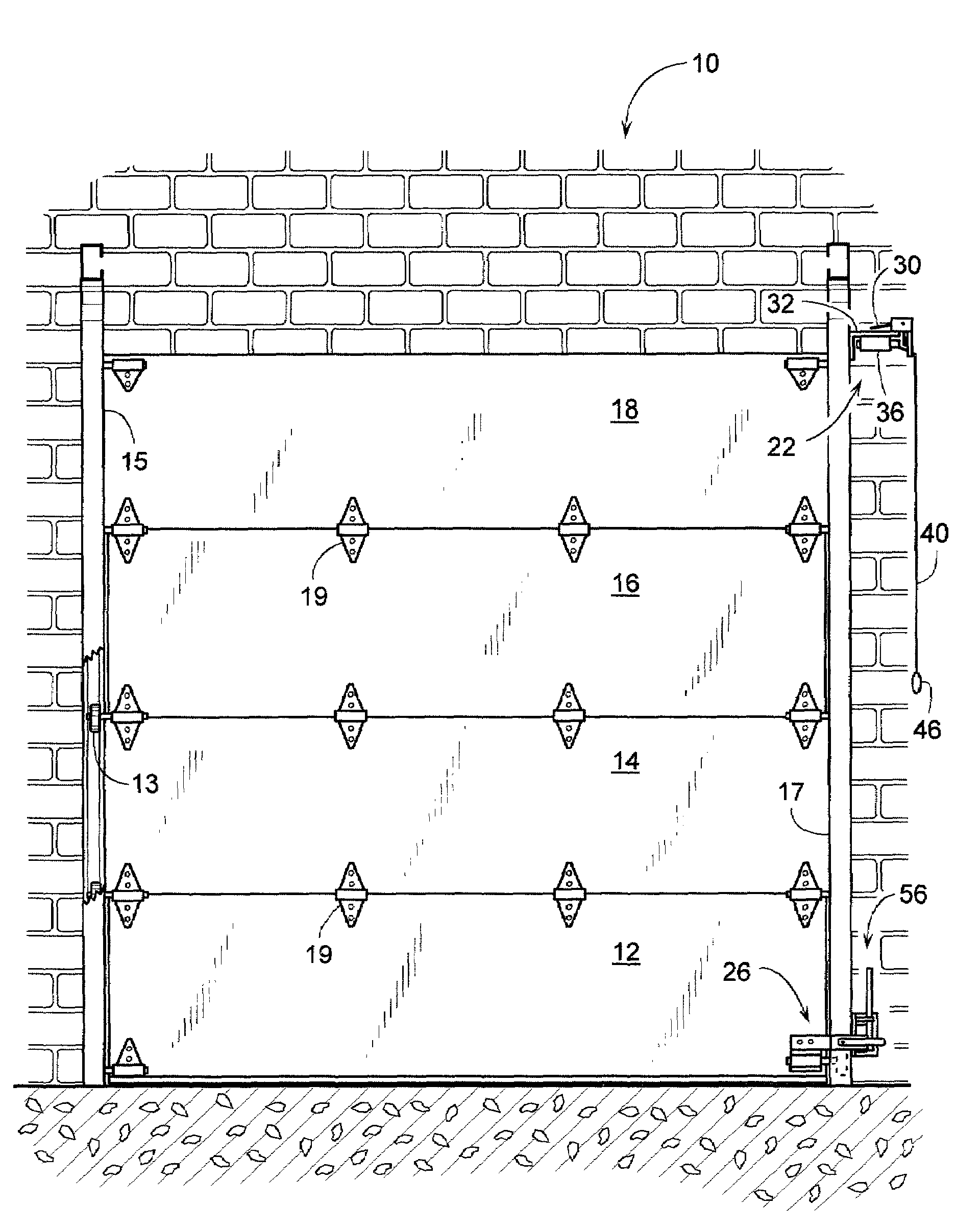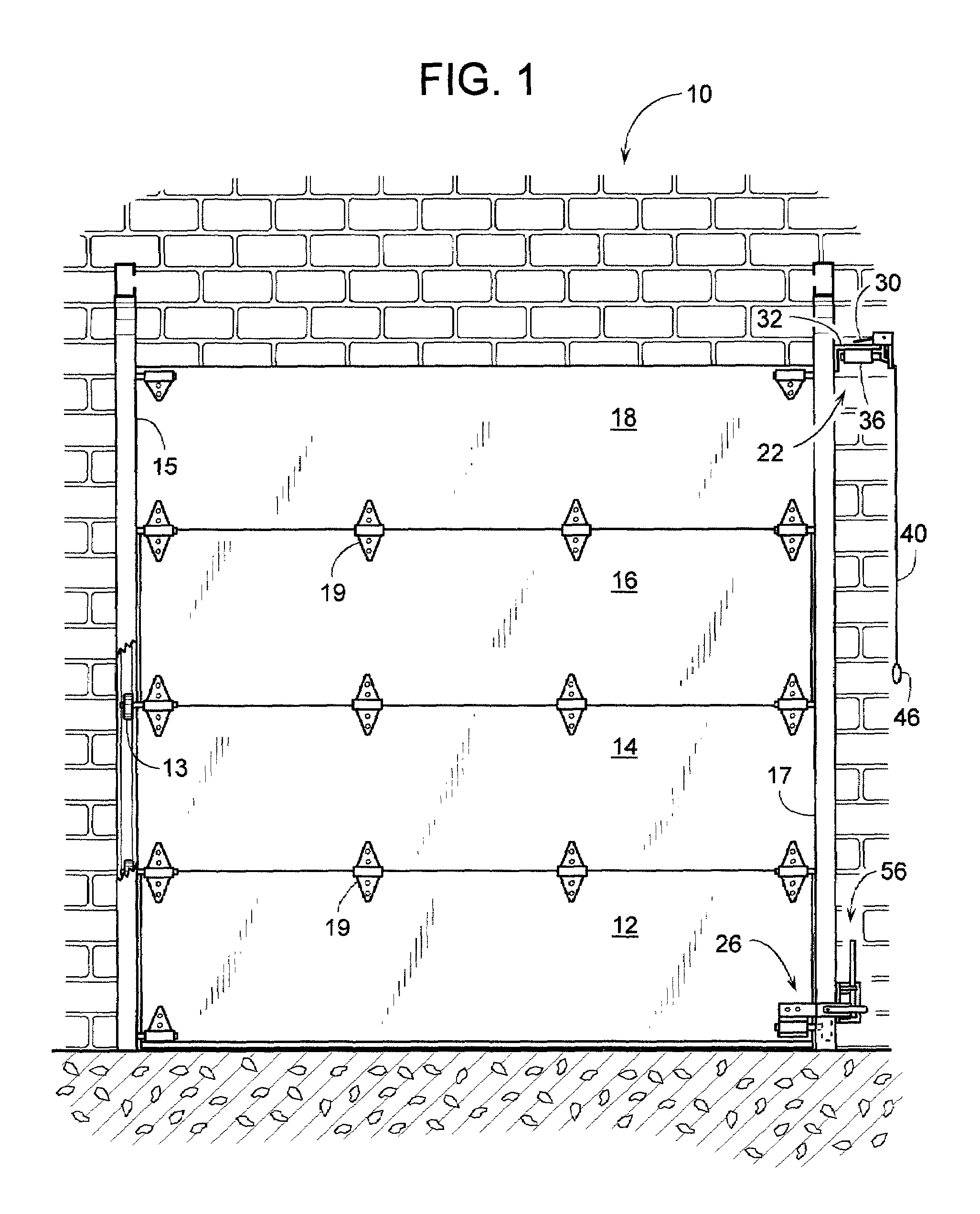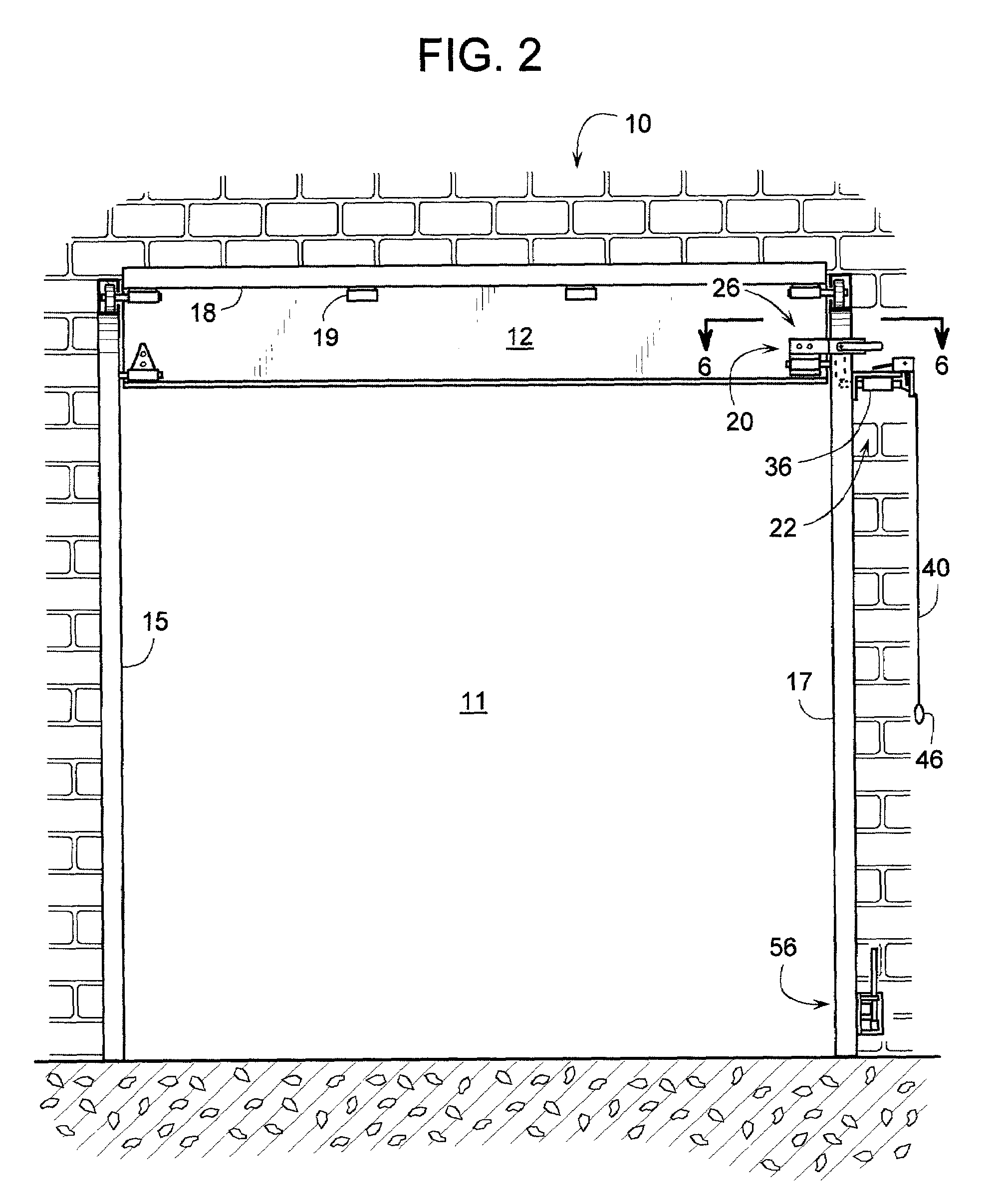Latch assembly for a sectional door
a technology for sectional doors and latches, applied in the field of sectional doors, can solve the problems of affecting the safety of passengers, and the movement of the latches can cause noise, so as to reduce the force needed to mov
- Summary
- Abstract
- Description
- Claims
- Application Information
AI Technical Summary
Benefits of technology
Problems solved by technology
Method used
Image
Examples
Embodiment Construction
[0032]A sectional door 10, shown closed in FIG. 1 and open in FIG. 2, includes a series of door panels 12, 14, 16 and 18 that are interconnected along their adjacent horizontal edges by hinges 19. As door 10 opens or closes relative to a doorway 11, guide members, such as rollers 13, guide the movement of the panels along two lateral tracks 15 and 17. In this example, tracks 15 and 17 curve between horizontal and vertical; however, it is well within the scope of the invention to have tracks 15 and 17 run generally linearly or only curve slightly, so that when the door opens, the door panels move above doorway 11, but remain in a generally vertical or slightly angled orientation. To close door 10, the vertical sections of tracks 15 and 17 guide the panels to a vertical position across doorway 11. When door 10 opens, hinges 19 allow the panels to curve around onto the horizontal sections of tracks 15 and 17, where the door panels store horizontally overhead.
[0033]Typically, a torsion ...
PUM
 Login to View More
Login to View More Abstract
Description
Claims
Application Information
 Login to View More
Login to View More - R&D
- Intellectual Property
- Life Sciences
- Materials
- Tech Scout
- Unparalleled Data Quality
- Higher Quality Content
- 60% Fewer Hallucinations
Browse by: Latest US Patents, China's latest patents, Technical Efficacy Thesaurus, Application Domain, Technology Topic, Popular Technical Reports.
© 2025 PatSnap. All rights reserved.Legal|Privacy policy|Modern Slavery Act Transparency Statement|Sitemap|About US| Contact US: help@patsnap.com



